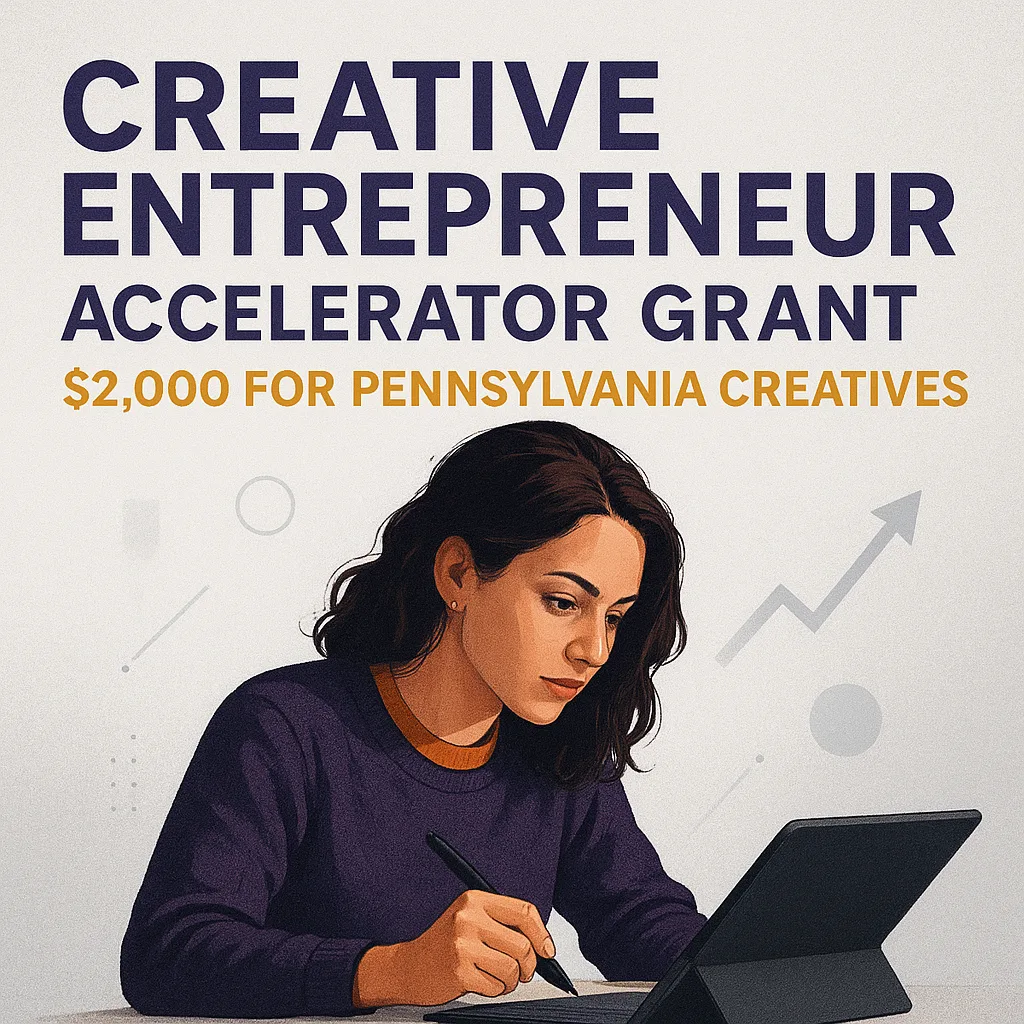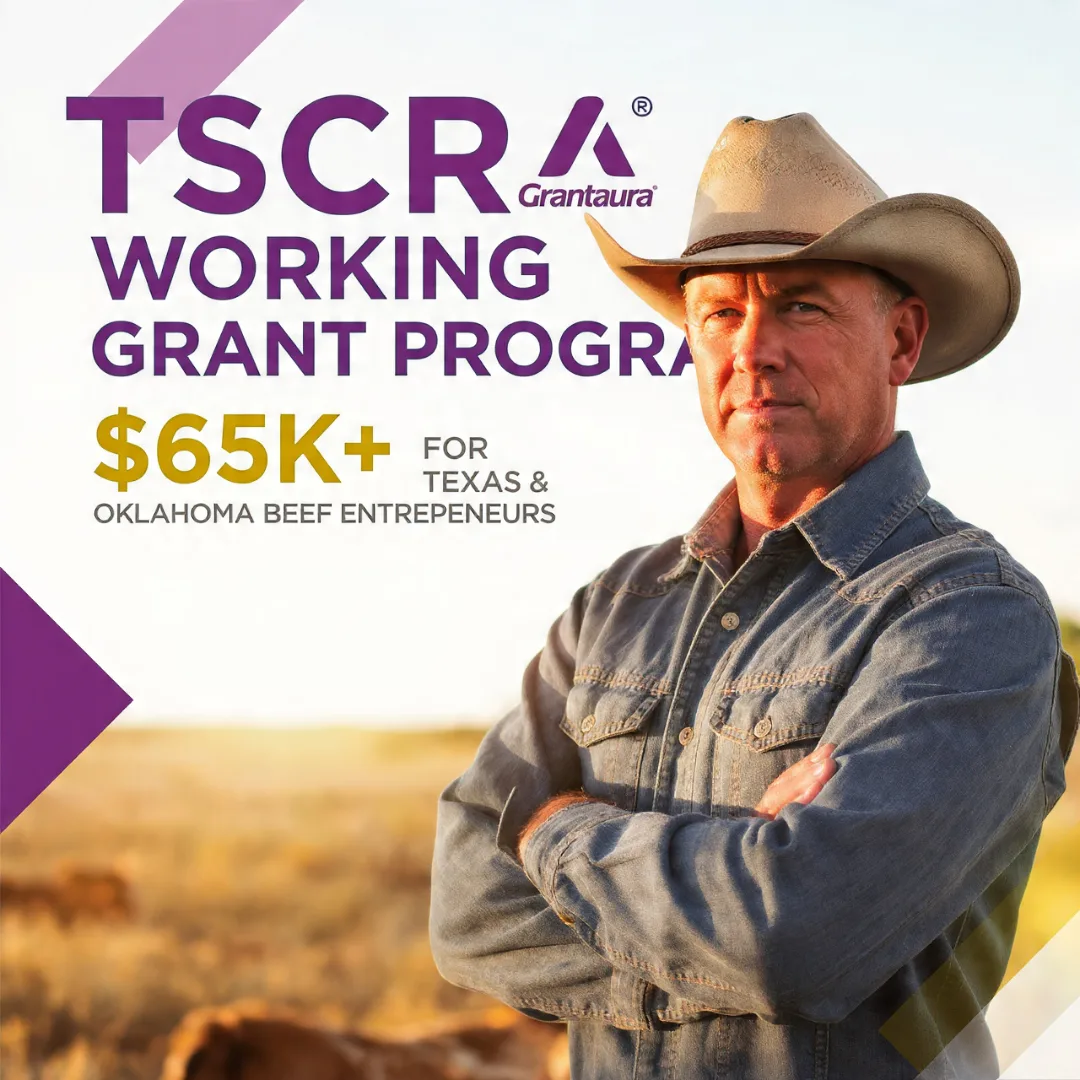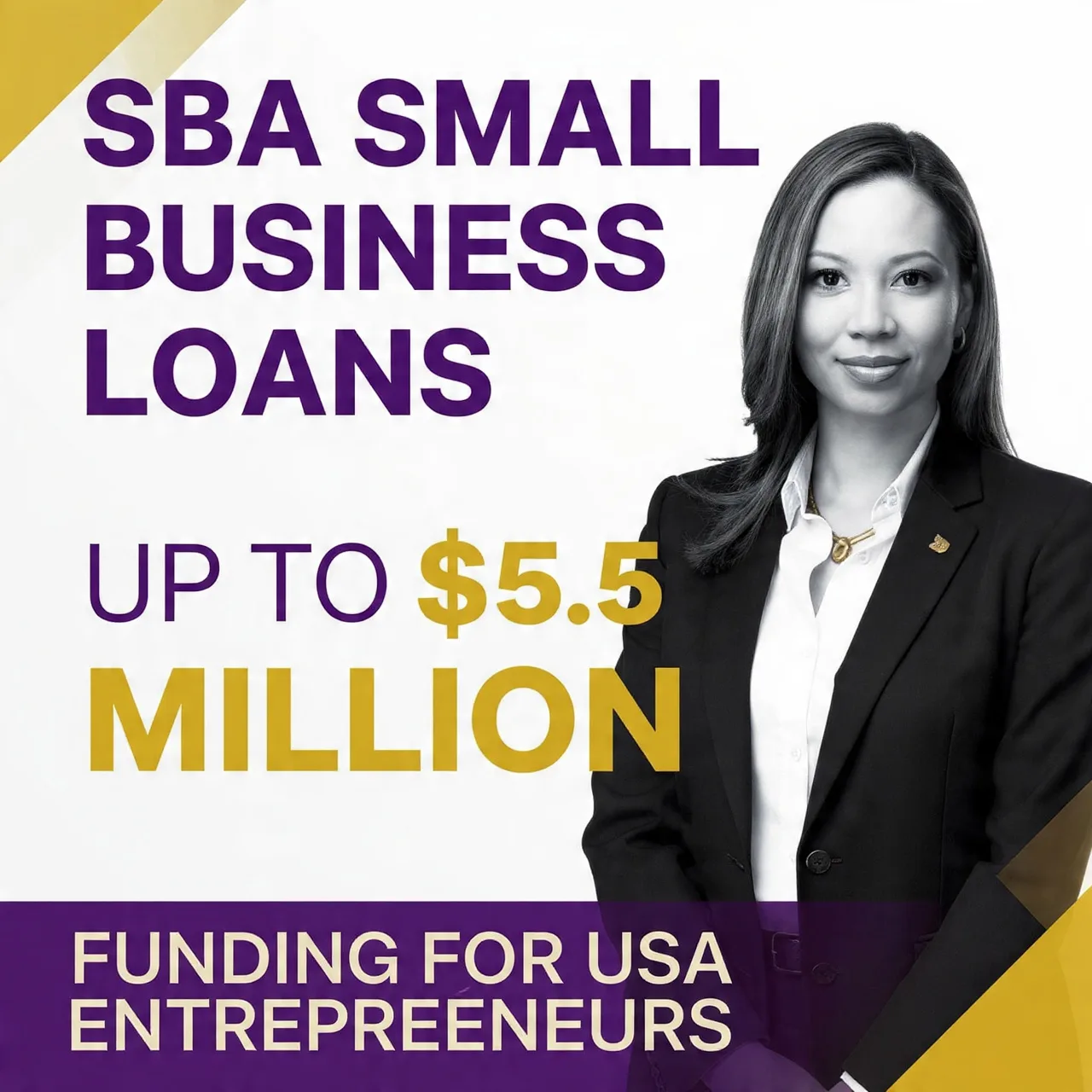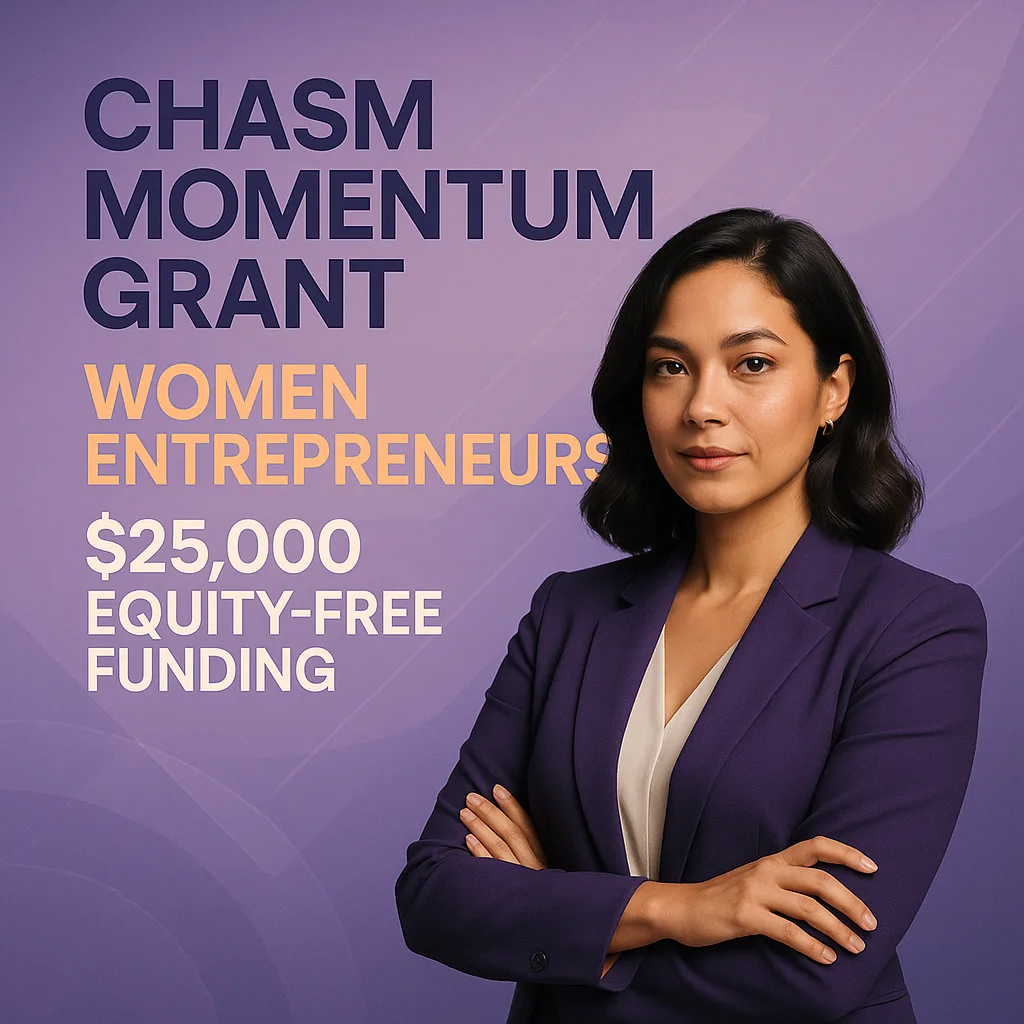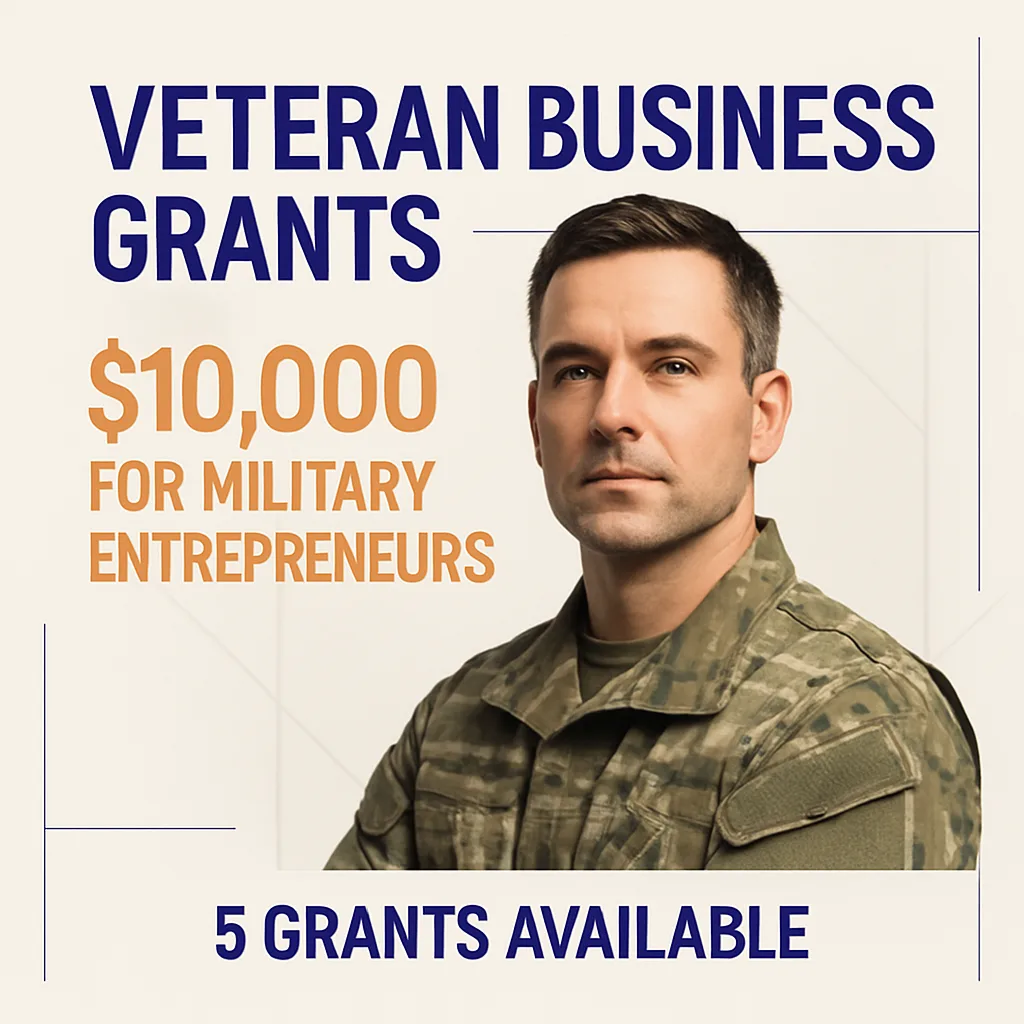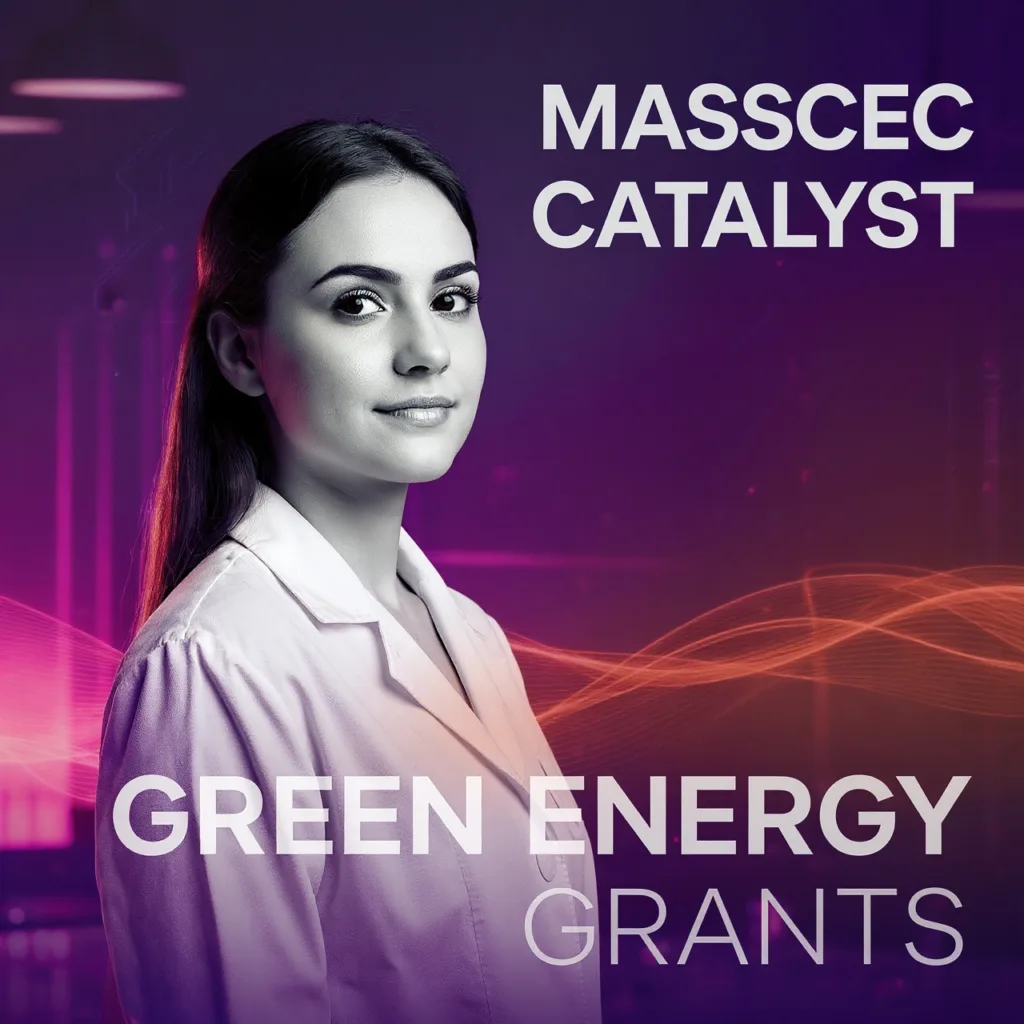
MassCEC Catalyst and DICES Green Energy Grant 2025: Up to $75,000 for Clean Energy Projects in Massachusetts
Win $75,000 green energy grant for cleantech prototypes. MassCEC Catalyst funds Massachusetts innovators. Apply Now. Expert help available.
Grant Overview
Massachusetts Researchers and Startups Can Access $75,000 in Green Energy Grant Funding to Transform Climate Tech Prototypes into Market-Ready Solutions
The Catalyst Program provides grants of up to $75,000 to researchers and early-stage companies looking to demonstrate initial prototypes of their climate technologies. But here’s what makes this green energy grant stand out in today’s competitive funding landscape. While investment in startups tied to clean energy and sustainability is on track for a sharp annual decline in 2025, driven by a drop-off in large rounds and a steep contraction in early-stage dealmaking, the MassCEC Catalyst and DICES programs buck the trend by specifically targeting the earliest innovators who need that crucial first injection of capital.
This is a rapid, practical proof-of-feasibility award that is particularly useful for projects at Technology Readiness Level 2 to 4 that target decarbonization across energy, transport, buildings, industry, agriculture, or resilience. Find similar green funding options on Grantaura.
You know the challenge. The program is designed to demonstrate the feasibility of transforming new ideas from the research stage to commercially viable technologies to increase industry and investor interest. Getting from a brilliant concept scribbled on a napkin to a working prototype that investors can actually touch – that gap is where most climate innovations die.
Not with this green energy grant.
Title: MassCEC Catalyst and DICES Programs
Donor: Massachusetts Clean Energy Center (MassCEC), MassVentures
Focus: green energy grant, clean energy funding, climate technology, renewable energy prototype development, energy efficiency, sustainable technology, Massachusetts cleantech
Region: Massachusetts, United States
Eligibility:
– Principal Investigators at Massachusetts-based nonprofit research institutions
– Massachusetts-based early-stage climatetech companies with four or fewer full-time employees
– Students led by a faculty member or researcher acting as Principal Investigator
– Technologies at Technology Readiness Level (TRL) 2-4
— Companies must have received less than $2,500,000 in combined debt, equity, grant funding, and revenues over past five years
– For DICES: Must be underrepresented in climatetech or faced economic barriers entering environmental/entrepreneurial landscape
Benefits:
– Financial Award: Up to $75,000 per project
– Mentorship: Direct coaching from MassCEC and MassVentures experts
– Networking: Access to vast partner network and investor connections
– Pitch Coaching: Complimentary training for all finalists
– Business Development: Strategic guidance on commercialization
Deadline: Ongoing – two cycles per year
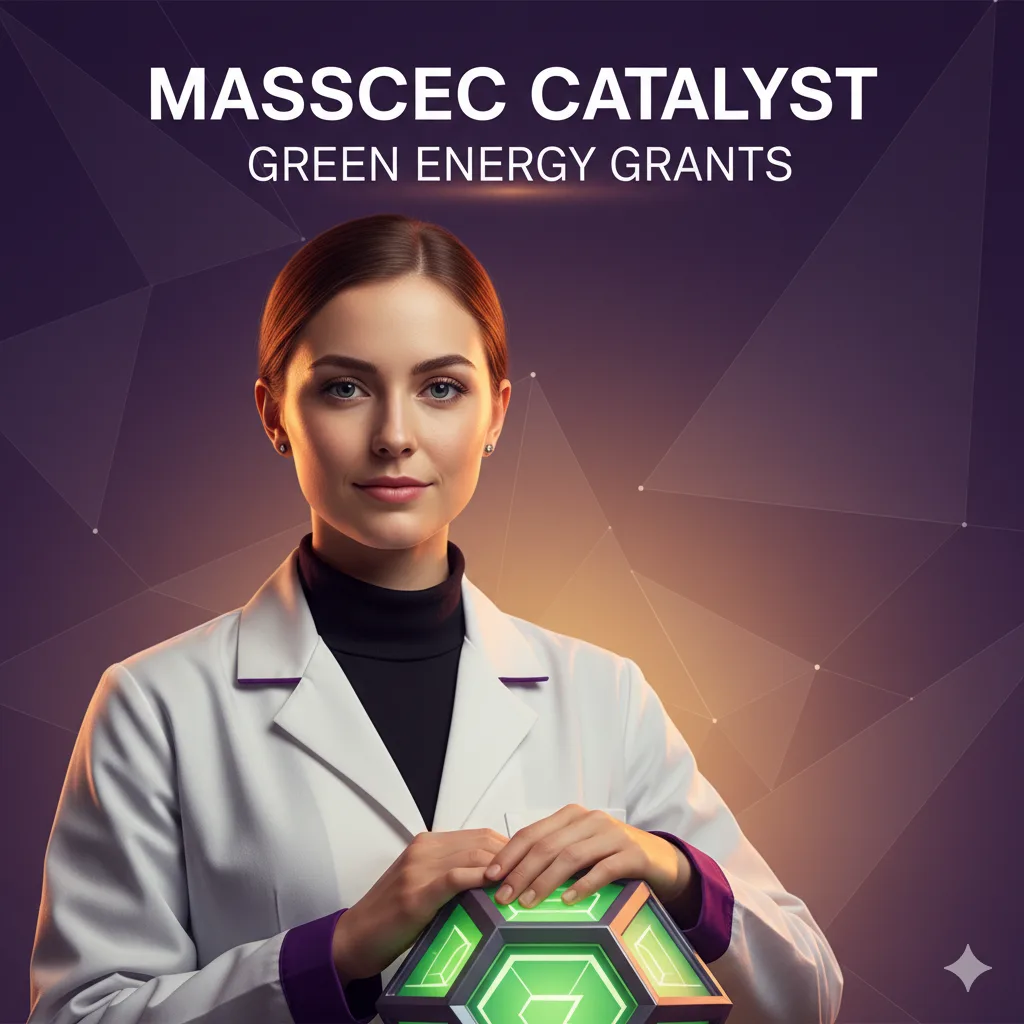
Why This Green Energy Grant Matters?
The timing couldn’t be more critical. Early-stage investment is off to a particularly weak start this year, with around $3.2 billion going to Series A and Series B deals, per Crunchbase data. That’s roughly half of year-ago levels. Yet Massachusetts continues to push forward. Since program inception, our Catalyst Program has awarded over $10.5 million to 185 awardees, who have gone on to raise more than $852 million in follow-on funding and submit 455 patent applications.
Think about that for a second.
One out of every four university awardees creates a new company. That’s not just funding research papers – that’s building the clean energy economy, one prototype at a time. Whether you’re developing breakthrough battery technology, revolutionary solar panels, or the next generation of wind turbines, this program understands that innovation needs both capital and community to thrive.
The Real Story Behind Massachusetts’ Green Energy Leadership
Massachusetts isn’t accidentally becoming a cleantech powerhouse. Did you know that we also have the highest percentage of clean energy workers per capita in the U.S. and our clean energy community includes the largest cleantech incubator in the country?§§https://www.masscec.com/sites/default/files/documents/Catalyst RFP Spring 2022.pdf§§ The state has deliberately built an ecosystem where your green energy grant application isn’t just another form in a pile.
Let me paint you a picture of what success looks like through this program.
AeroShield is making a new generation of energy-efficient windows with superior performance to those on the market today, yielding greater energy savings and comfort at an affordable price. Spun out of MIT in 2019, the startup’s innovation is a super insulating sheet of porous glass that can be dropped into existing window manufacturing. These transparent, aerogel sheets create a window that is 50 percent more insulating than traditional double-pane windows with a payback period that is 3 to 5 times faster than a triple-pane of similar performance.
Q: Can out-of-state companies apply if they plan to relocate?
A: Yes, but you must show concrete relocation plans before award announcement.
Q: What exactly is TRL 2-4?
A: Technology concept formulated through proof of concept validation.
Understanding the Two Tracks: Catalyst vs DICES
Here’s where strategic thinking pays off. The program offers seven Catalyst grants and three additional DICES grants.
Diversity in Cleantech Early Stage (DICES), in parallel with Catalyst, awards three (3) additional grants of up to $75,000 each for projects led by eligible (certified or certifiable) women-owned or minority-owned early-stage companies.
DICES targets women-owned and minority-owned companies plus individuals who faced economic barriers entering environmental entrepreneurship. This isn’t charity – it’s strategic recognition that diverse teams often develop more innovative solutions because they approach problems from different perspectives.
The application process requires demonstrating underrepresentation or economic barriers. First-generation college graduates qualify. People from low-income backgrounds qualify. Anyone who lacked traditional startup funding networks qualifies. Similar diversity-focused programs often provide additional support structures that prove crucial for long-term success.
Application Timeline and Strategic Preparation
Applications open August 19, 2025, with a September 30 deadline. Successful applicants typically start preparing months earlier because the 11-page application limit forces brutal clarity about value propositions, technical feasibility, and commercial potential.
The optional September 4 webinar consistently reveals evaluation criteria that aren’t obvious from written materials alone. Attending isn’t required but provides significant competitive advantage. Questions submitted by September 16 receive public responses by September 19 – valuable intelligence for final application refinement.
The two-stage process (written application, then finalist presentations) means initial proposals must generate enough interest to earn presentation slots. December presentations often determine winners, evaluating not just technology but communication skills and commercial understanding.
Q: Should I include preliminary customer feedback?
A: Absolutely, customer discovery evidence significantly strengthens applications.
Q: How technical should the application be?
A: Technical enough to demonstrate feasibility, accessible enough for business-oriented reviewers to understand value.
Q: Can I reapply if rejected?
A: Yes, feedback from unsuccessful applications often leads to successful resubmissions.
Smart applicants don’t just pick one track randomly.
If you’re an underrepresented founder, DICES might offer better odds. The pool is smaller, the mission is focused, and Massachusetts actively wants to diversify its cleantech ecosystem. Consider similar diversity-focused funding opportunities that could complement this application.
But Catalyst remains the flagship program. Seven awards means more chances, and the evaluation criteria focus purely on technical merit and commercial potential.
Technology Readiness Levels Demystified
I know TRLs can sound like government jargon, but they’re actually pretty straightforward once you break them down. For this green energy grant, your technology needs to be at TRL 2-4, which means:
TRL 2: You’ve moved beyond basic principles and have formulated your technology concept and application. Maybe you’ve done some analytical studies or paper designs, but you haven’t built anything yet.
TRL 3: You’ve actually started experimental development. You might have a lab-scale prototype that proves your concept works, but it’s nowhere near ready for real-world conditions.
TRL 4: You’ve validated your technology in a laboratory setting. Your prototype works consistently under controlled conditions, and you’re getting ready to test it in a more relevant environment.
What’s interesting is how this TRL focus creates a natural pipeline within Massachusetts’ cleantech ecosystem. Once you outgrow Catalyst (TRL 5+), you might be ready for programs like InnovateMass or CriticalMass, which support more advanced technologies. This strategic approach ensures that innovations don’t fall through the cracks as they mature.
Maximizing Your Technology Readiness Level Assessment
The TRL calculator isn’t just a formality. It’s your first test. Many applicants incorrectly assess their TRL, either overselling (claiming TRL 5 when they’re really TRL 3) or underselling (not recognizing they’ve achieved TRL 4). Get this wrong, and your application lands in the rejection pile before anyone reads your innovation description.
Here’s a practical breakdown. TRL 2 means you’ve observed the basic principles. Maybe you’ve shown that a certain material can convert sunlight to electricity more efficiently. TRL 3 involves analytical studies and laboratory demonstrations. You’ve built small-scale versions and collected data. TRL 4 requires component validation in laboratory conditions. Multiple parts work together reliably.
Why Most Brilliant Technologies Never Reach Market
The research valley of death kills more promising innovations than technical failures ever will. Academic researchers excel at breakthrough discoveries but often struggle with commercial development. Entrepreneurs understand markets but may lack deep technical expertise. This green energy grant program specifically addresses that gap by requiring both technical validation and commercial potential.
Recent awardees demonstrate this balance perfectly. Atacama Biomaterials developed renewable plastic alternatives. Feon Energy created high energy density lithium batteries. Haystack Ag pioneered soil carbon measurement systems. Each represents breakthrough technology with clear market applications.
Q: Can university researchers apply if they plan to start companies?
A: Yes, and historically one in four university awardees creates new companies.
Q: Do technologies need to fit MassCEC’s six focus areas?
A: No, any technology enabling significant decarbonization qualifies.
Q: What happens if my technology doesn’t work as expected during the grant period?
A: Learning what doesn’t work is valuable data that strengthens future development and investor discussions.
The Money Math: Making $75,000 Count
Seventy-five thousand might sound substantial, but in cleantech development, it disappears fast. Successful applicants typically allocate funds across three categories. Materials and equipment (40-50%), personnel costs (30-40%), and testing/validation (20-30%). Don’t forget Massachusetts overhead rates if you’re applying through a university.
Compare this to federal programs. The Department of Energy’s funding often starts at $250,000 but requires extensive reporting and longer timelines. The EPA’s Solar for All program offers millions but focuses on community deployment, not technology development. For early-stage innovation, Catalyst’s smaller, faster funding often proves more valuable.
What Projects Actually Win?
Looking at recent winners reveals patterns. Adden Energy has developed a breakthrough, (mechanically-constrained) solid-state battery solution that outperforms the liquid Lithium-ion batteries used currently in vehicle electrification. Adden’s battery solution allows for quick, daily recharging, safe energy storage, and long battery life, solving key barriers to greater adoption of electric vehicles.
Notice something? These aren’t incremental improvements. They’re addressing fundamental problems in the energy transition. Your green energy grant application needs that same ambition.
The Money Part (And What They Don’t Tell You)
Seventy-five thousand dollars. Sounds straightforward, right?
But here’s what seasoned applicants know: this grant does more than fund your prototype. All awardees gain access to a vast network of partners, expert local market and policy insights, and mentoring from MassCEC and MassVentures, while all finalists receive complimentary pitch coaching and business mentoring.
That pitch coaching alone? Worth thousands if you hired consultants. The network access? Priceless when you’re trying to navigate Massachusetts’ tight-knit cleantech community. Past participants describe the mentorship as transformative – not just checkbox meetings but real strategic guidance from people who’ve seen hundreds of cleantech startups succeed and fail.
Q: Do I need matching funds?
A: No matching requirement specified.
Q: Can I include intern costs?
A: Yes, but not if they’re funded through MassCEC’s separate internship program.
Q: How competitive is the selection process?
A: Extremely – focus on demonstrating clear commercial viability.
Your Application Strategy
September 30, 2025 at 11:59 PM. Mark it.
But don’t wait until September to start. The application requires an 11-page maximum form plus up to 5 pages of attachments. That’s not much space to convince evaluators your technology deserves funding over hundreds of other applicants.
The Application Timeline That Works
August 19, 2025: Applications open. Download the form immediately. Study every section.
September 4, 2025: Attend the optional webinar at noon. “Optional” means mandatory if you’re serious. Take notes on what evaluators emphasize.
September 16, 2025: Deadline for questions. Submit yours early – the responses posted September 19 might reshape your approach.
Smart applicants start drafting in August, refine after the webinar, adjust based on Q&A responses, then polish until submission. Those final two weeks? That’s when you get feedback from advisors, not when you start writing.
Past Winners: Learning from Success
Looking at companies like Fourier LLC (thermal management), MacroCycle (circular plastics), and River Otter Renewables (renewable crude oil), successful projects share common characteristics beyond technical innovation.
First, they address identifiable market pain points rather than creating solutions seeking problems. Second, they demonstrate clear commercialization pathways within realistic timelines. Third, they show how this specific green energy grant funding enables crucial next steps rather than simply extending research timelines.
Atacama Biomaterials developed renewable plastic alternatives. River Otter Renewables created renewable crude oil. Active Surfaces pioneered ultra-thin film flexible solar. Notice the pattern? Each addresses massive markets with novel approaches. They’re not incrementally improving existing solutions. They’re reimagining entire categories.
One standout: Benchmark Labs secured Catalyst funding for environmental forecasting technology. Not traditional hardware, but software that enables better renewable energy deployment. The program embraces broad definitions of cleantech.
The testimonials reveal another pattern: winners use grant funding to achieve milestones that attract serious investor attention. As Helix Carbon’s COO noted, “Thanks to Catalyst funding, we have been able to improve our technology and scale it to the point where we are going to pilot our system with a paying customer.”
Q: How do past winners typically spend the $75,000?
A: Prototype development, customer validation pilots, and talent acquisition dominate spending patterns.
Q: What percentage of awardees successfully raise follow-on funding?
A: Historical data suggests 60-70% raise additional funding within two years.
Q: Are software-only solutions eligible?
A: Yes, if they enable significant decarbonization.
Q: Can I reapply if rejected in a previous round?
A: Absolutely. Many successful applicants applied multiple times.
Q: Do international partnerships strengthen applications?
A: Strategic partnerships can help, but primary operations must remain Massachusetts-based.
Building compelling cleantech applications with proper market validation is incredibly complex work. The technology must be proven enough to demonstrate feasibility but early enough to benefit from development funding. The business case must be compelling enough to attract future investment but realistic enough to achieve within grant timelines. If you’re serious about maximizing your chances with this green energy grant opportunity, professional guidance makes a meaningful difference. That’s precisely what we specialize in at Grantaura – identifying optimal funding strategies and crafting applications that address evaluator priorities effectively. Worth considering as you develop your approach. CLICK HERE to get GRANT PROPOSAL WRITING help.
Writing Your Technical Narrative
Your project description needs to balance technical sophistication with accessibility. Remember, evaluators include both deep technical experts and business-minded reviewers. For prototyping, areas to consider include materials characterization; models and tools; intellectual property protection; small-scale production; R&D funding; and regional, state, and local resources. For more resources, see the Clean Energy Manufacturing Federal Resource Guide.
Start with the problem. Not your solution – the problem. What specific challenge in the energy transition does your technology address? Quantify it. “Reduces solar panel installation costs by 40%” beats “makes solar more affordable.”
Then your solution. But here’s the trick: explain it like you’re talking to a smart investor at a coffee shop, not presenting at an academic conference. Technical details matter, but comprehension matters more.
Beyond the Prototype: Planning for Scale
Evaluators look for more than cool technology. They want to see a path to market. In this article, we will explore some key steps and principles to guide you through the process of prototyping and testing your renewable energy solution. Consider how your prototype demonstrates not just technical feasibility but commercial viability.
Think about manufacturing. Can your breakthrough be produced at scale? What partnerships might you need? Other innovation grants might fund those next steps, but show you’re thinking ahead.
Market readiness matters too. Who are your first customers? Government agencies buying through procurement programs? Utilities meeting renewable mandates? Homeowners seeking efficiency upgrades? Be specific about your beachhead market.
The DICES Difference: Diversity as Innovation Driver
In parallel with Catalyst, MassCEC will award up to three additional DICES grants of up to $75,000 each for projects led by applicants who are underrepresented in the climatetech industry or faced economic barriers entering the environmental or entrepreneurial landscape.
DICES isn’t charity. It’s recognition that innovation comes from unexpected places.
If you qualify for DICES, lean into your unique perspective. How does your background inform your approach to clean energy challenges? Maybe you’re solving problems others don’t even see because they haven’t lived your experience.
Q: What counts as underrepresented for DICES?
A: Section II of the application lets you self-identify and explain.
Q: Do DICES applications compete against Catalyst applications?
A: No, they’re evaluated separately with distinct funding pools.
Common Application Mistakes (And How to Avoid Them)
After analyzing successful applications, patterns emerge in what doesn’t work:
The Academic Trap: Writing like it’s a journal submission. This is a business grant, not peer review. Yes, your science must be sound, but commercial potential drives decisions.
The Moonshot Problem: Promising to solve climate change entirely. Focus on one specific, achievable milestone this $75,000 enables. Evaluators prefer realistic ambition over fantasy.
The Empty Network: Claiming you’ll “leverage Massachusetts resources” without specifics. Name potential partners. Reference specific facilities you’ll use. Show you understand the ecosystem.
The Missing Numbers: Vague market sizes and cost projections. Even early-stage projects need some quantification. If you’re guessing, show your assumptions.
Leveraging Massachusetts’ Cleantech Ecosystem
This green energy grant doesn’t exist in isolation. Massachusetts has deliberately built interconnected programs. As employers, climatetech companies can also take advantage of our Clean Energy Internship program. The Clean Energy Internship program facilitates the placement of college students and recent graduates into paid internships with verified clean energy companies across Massachusetts by providing stipends for interns during fall, spring and summer sessions.
Smart founders use Catalyst as a launching pad:
– Win Catalyst funding for your prototype
– Hire interns through the Clean Energy Internship program
– Apply for InnovateMass when ready for demonstration
– Graduate to MassCEC’s investment programs for scaling
Each program builds on the previous. Your Catalyst application should hint at this trajectory without assuming success.
The Pitch: Your Make-or-Break Moment
Finalists present the week of December 8, 2025. All finalists receive complimentary pitch coaching and business mentoring. But coaching only polishes what you bring.
Your pitch needs three elements:
The Hook: One sentence that makes evaluators lean forward. “We’ve figured out how to make solar panels from food waste at half the cost” beats “Our innovative photovoltaic technology leverages organic substrates.”
The Demo: If you’re pitching a prototype grant, show the prototype. Even rough versions. Seeing is believing. Videos, photos, anything tangible beats slides of equations.
The Ask: Be specific about what $75,000 accomplishes. “This funding completes our proof-of-concept prototype, enabling us to demonstrate 50% efficiency improvements to three potential customers already expressing interest.”
Q: How long is the pitch?
A: Varies by round, typically 5-10 minutes plus Q&A.
Q: Who judges?
A: Panel of independent industry experts.
Success Stories That Inspire
Funds from the Catalyst and other grant programs helped the Harvard spinout develop its core technology. The company has since raised a $5 million Seed round to prove commercial feasibility. That’s the trajectory – from grant to growth.
Or consider River Otter Renewables, whose founder shared: We are profoundly grateful to MassVentures and their exceptional leadership team for their support. The funding provided through the MassCEC’s Catalyst and DICES programs is instrumental in advancing the scale-up prototyping of our cutting-edge technology, enabling us to bring our vision to fruition.
These aren’t just grants. They’re validation, credibility, and launching pads.
The Application Submission Process
– Application period opens: August 19, 2025.
– Optional webinar: Sept 4, 2025 (recording posted).
– Deadline to submit questions: Sept 16, 2025.
– MassCEC posts answers: Sept 19, 2025.
– Applications due: Sept 30, 2025 by 11:59 PM.
– Finalists notified: Mid-November 2025; finalist presentations in early December; awards announced late January 2026.
Technical details matter:
– Submit through the MassVentures portal (not MassCEC’s site)
– PDF format only, Calibri font size 11
– 11-page application maximum plus 5 pages attachments
– Single file, 4MB maximum
Pro tip: Convert to PDF early and check formatting. Nothing worse than perfect content ruined by corrupted formatting at 11:58 PM on deadline day.
Email companycatalyst@masscec.com with questions, but remember the September 16 cutoff. After that, you’re on your own.
Selection criteria and scoring (what to emphasize)
– Climate impact and technical novelty.
– Feasibility and realism of the prototype plan.
– Team capability and readiness to commercialize.
– Market need and customer traction or pilot prospects.
Add a short commercialization map in your appendix and a concise risk-mitigation list. That clarity moves you up the scorecard. Compare scoring across MassCEC programs.
Q: Can I apply if I already have some funding?
A: Yes. Startups may have prior funding but typically must have less than $2,500,000 in combined debt, equity, grants, and revenue over five years; academic applicants have different rules. See funding limits in related programs.
Q: Is IP required to be assigned?
A: No. You may describe the approach without disclosing proprietary details. Follow RFP instructions on IP and contracting. Find research grant IP guidance.
Q: Who can be PI?
A: A PI can be a faculty researcher for academic submissions or a founding technical lead for company submissions. See other PI examples.
Your Green Energy Grant Roadmap
Let’s be real about your chances. Hundreds apply. Ten win. Those aren’t lottery odds – they’re merit-based selections where preparation determines success.
The Final Push
As you prepare your application, remember what this green energy grant really represents. The annual cleantech investments will surpass USD 1 trillion by 2030. This will be driven by advancements in battery storage and electrolysis technologies. You’re not just seeking $75,000. You’re positioning yourself at the forefront of a trillion-dollar transformation.
Massachusetts gets this. That’s why programs like Catalyst exist – to find and fund the innovations that matter before they’re obvious to everyone else.
Your technology might be the breakthrough that helps Massachusetts maintain its cleantech leadership. But only if you apply. Only if you articulate your vision clearly. Only if you demonstrate both technical excellence and commercial viability.
The September 30 deadline approaches fast. Start now. Draft early. Revise often. Get feedback from people who’ve won grants before. Connect with other grant resources to strengthen your overall funding strategy.
Remember: someone will win this green energy grant. Seven someones, actually. Plus three more through DICES.
Why not you?
The Grantaura Advantage
Look, submitting a grant application for cutting-edge climate technology while trying to actually develop that technology? It’s like juggling flaming torches while solving differential equations. You’re brilliant at the science part. But the grant writing, proposal development, and strategic positioning? That’s where outside expertise pays dividends.
Grantaura specializes in exactly this challenge. We’ve helped over 300 clients navigate complex grant applications with a 4.9-star success rate. Our team understands both the technical depth evaluators expect and the commercial narrative that wins funding. We don’t just edit your application – we help position your innovation within Massachusetts’ broader cleantech strategy.
Ready to transform your green energy innovation into funded reality? CLICK HERE to get expert GRANT PROPOSAL WRITING help that could make the difference between rejection and that $75,000 check.
Check Your Eligibility
The eligibility tool helps you quickly determine if you qualify for this green energy grant. Click “Let’s start” to answer a few simple questions about your organization type, technology readiness level, and Massachusetts presence. If you’re eligible, you’ll proceed to our application assessment where Grantaura’s experts evaluate your specific project and provide personalized guidance on strengthening your submission.
More Green Energy Grant Opportunities
- InnovateMass $350K Cleantech Grant Massachusetts 2025: Massachusetts cleantech companies at TRL 5-8 can access up to $350,000 in non-dilutive funding plus technical support to advance their technologies toward commercialization.
- AmplifyMass Grant 2025: Unlock $300000 in Cost-Share: Bridge the funding gap for Massachusetts cleantech innovators with strategic cost-share support for ARPA-E, NSF, and DOE grants, providing up to $300,000 in matching funds.
- Acorn Innovation Grant 2025 by MassVentures: Massachusetts researchers can access up to $36,000 for pioneering technology development, providing crucial early-stage funding for innovative concepts and prototypes.
- WiRE & CanREA 2025 Green Energy Grant for Women: Canada’s premier green energy grant recognition specifically for women leaders in renewable energy, offering national platform opportunities and industry recognition.
- ClimateLaunchpad: World’s Largest Green Business Competition: Transform your green idea into a successful startup with training, competition access, and global network connections through the world’s largest cleantech business competition.
- $100K Climate Grant: Youth Ecopreneur Programme: Young environmental entrepreneurs under 35 can apply for this $100,000 climate grant designed to support innovative solutions to environmental challenges.
- SBIR Targeted Technologies (START) Grants: Massachusetts startups can access between $100,000 to $500,000 through this SBIR/START program designed to help companies bridge the funding gap between Phase I and Phase II awards.
- Patagonia Environmental Grants for Climate Action: While focused on activism rather than technology development, Patagonia offers $5,000-$20,000 for organizations tackling environmental challenges through direct action campaigns, perfect for cleantech companies with community engagement components.
- Renewable Energy Funding Category: Explore dozens of renewable energy grants similar to MassCEC Catalyst, including federal opportunities through DOE and USDA that offer larger awards up to $500,000 for energy innovation projects across the United States.
- Massachusetts Grant Opportunities: Beyond MassCEC, Massachusetts offers multiple funding streams for clean energy ventures including state tax credits, utility rebate programs, and municipal green energy initiatives worth exploring.
- Prose AANHPI Emerging Entrepreneurs Grant: Though not energy-specific, this $10,000 grant supports diverse founders and explicitly welcomes sustainable business models, making it ideal for cleantech entrepreneurs from underrepresented backgrounds.
- Environmental Innovation Grants: This comprehensive category includes grants for solar technology, wind energy, battery storage, and energy efficiency projects with awards ranging from $5,000 to over $1 million for qualified applicants.
- Start.Pivot.Grow Business Development Grant: Offers $2,500 quarterly for small businesses including those in clean energy sectors, providing operational funding that could supplement your prototype development budget.
- Secretsos Small Business Grants: Microgrants for underserved US entrepreneurs; quarterly $2,500 awards that can help cover early prototype costs.
- Breva Thrive Grant – USA Small Business $5,000: Quarterly awards for community-focused small businesses; useful for pilot cost share and local validation.
- Prose AANHPI Entrepreneur Grant: $10,000 for eligible AANHPI founders; can be a helpful bridge funding source for prototype validation.
- This Woman Knows – $500 Microgrants: Small awards for women founders that can be used for early product testing or pilot outreach.
- National Clean Energy Funding Programs: Access federal green energy grant opportunities including ARPA-E, DOE SBIR/STTR programs, and NSF funding specifically designed for early-stage energy technology development.
- Pathway to Opportunities Competition: Connect your cleantech innovation with corporate supply chains while competing for $5,000, particularly valuable for energy efficiency technologies seeking commercial partnerships.
- Technology Innovation Grants: Discover grants supporting breakthrough technologies including AI-powered energy management, smart grid innovations, and next-generation renewable energy systems.
- New England Regional Energy Programs: Regional initiatives often complement state programs, offering additional funding layers for multi-state clean energy projects expanding beyond Massachusetts.
- Maine Technology Institute Business Innovation Grant – $50K for Tech Startups: Similar regional approach offering $5,000-$50,000 for innovative Maine-based businesses in technology sectors. Strategic funding for early-stage companies ready to validate concepts and accelerate commercialization. Different geographic focus but comparable development stage targeting.
- Startup Grant Collection – Early-Stage Business Funding Hub: Specialized database of grants designed for early-stage companies across industries, including numerous cleantech and sustainability-focused programs with various geographic requirements and funding levels.
- Emergent Ventures Grant – High-Impact Fellowship for Bold Innovators: Tyler Cowen’s program funding moonshot ideas advancing prosperity and well-being. Rolling applications with no formal requirements beyond demonstrating world-changing potential. Complementary approach for breakthrough cleantech innovations.
- Women Entrepreneur Grants – Female-Founded Business Support: Similar to DICES diversity focus, these grants specifically support women-led startups across industries, recognizing funding gaps that female entrepreneurs often encounter in traditional investment channels.
- Nehemiah Davis Greatness Grant – $2,500 Quarterly for First-Time Founders: Designed for beginning entrepreneurs without traditional resources, offering quarterly funding plus mentorship. Perfect for very early-stage cleantech innovators who need initial validation funding before pursuing larger grants.
Securing green energy grant funding requires strategy, not just hope. Grantaura’s free platform connects you with hundreds of additional opportunities beyond MassCEC Catalyst. Create your profile today to receive personalized grant matches based on your technology focus, development stage, and geographic location. With new opportunities posted daily, you’ll never miss another deadline for critical cleantech funding. Finding the right green energy grant can feel overwhelming, but Grantaura’s free platform makes it simple.
Terms
- TRL (Technology Readiness Level): A measurement system from 1-9 assessing technology maturity. TRL 2-4 means you’ve moved from basic principles observed (TRL 1) to laboratory validation but haven’t reached system prototype demonstration yet.
- Cleantech: Technologies and services providing superior environmental performance including renewable energy generation, energy storage, efficiency improvements, and sustainable materials addressing climate change and resource challenges.
- Principal Investigator (PI): The individual responsible for conducting research and overseeing the technical aspects of the grant project, typically a faculty member at research institutions or technical lead at companies.
- Follow-on Funding: Additional investment secured after initial grant funding, demonstrating investor confidence. MassCEC Catalyst recipients average 80x returns through follow-on funding within five years.
- Green Energy Grant: Government or foundation funding specifically supporting renewable energy, energy efficiency, or climate technology development without requiring equity dilution or loan repayment.
- Prototype Development: Building functional models demonstrating technology feasibility. For this grant, prototypes should prove core technical concepts work while identifying pathways to commercial-scale production.
- First-of-a-Kind (FOAK) Projects: Implementation of cleantech for the first time in real conditions, representing the crucial bridge between laboratory validation and commercial deployment. These projects carry higher risk but offer breakthrough potential that established technologies cannot provide.
- Commercialization: Complex process transforming research discoveries into market-ready products or services generating sustainable revenue. Successful cleantech commercialization requires technical validation, customer development, regulatory compliance, business model validation, and investor engagement. Green energy grant programs specifically target this challenging transition phase.
- Energy Efficiency: Technologies reducing energy consumption while maintaining or improving performance. Examples include advanced building materials, smart grid systems, and industrial process optimization.
- Pitch Deck: Visual presentation summarizing your business model, technology advantages, market opportunity, and funding needs. MassCEC provides coaching to develop compelling pitch decks for finalist presentations.
- Beachhead Market: Your first target customer segment where you can establish market presence before expanding. Strong applications identify specific, accessible beachhead markets for their green energy innovations.
- Non-dilutive Funding: Grants like MassCEC Catalyst that provide capital without requiring equity ownership, allowing founders to maintain full control while developing their technology.
- Carbon Footprint Reduction: Measurable decrease in greenhouse gas emissions. Successful green energy grant applications quantify potential carbon reduction impact at commercial scale.
- Energy Transition: The global shift from fossil fuels to renewable energy sources. Massachusetts positions itself as a leader in this transition through programs like Catalyst.
- Follow-on Funding: Investment rounds occurring after initial grant funding, typically from venture capital, strategic investors, corporate partners, or additional government programs. Successful green energy grant recipients use initial funding to achieve specific milestones attracting larger follow-on investments.
- Pitch Deck Development: Presentation slides summarizing business opportunity, technology advantages, market potential, team capabilities, competitive positioning, and funding requirements. Catalyst finalists must develop compelling pitch decks for evaluation panel presentations, with professional coaching optimizing presentation effectiveness.
- Business Model Innovation: Framework describing how companies create, deliver, and capture value from cleantech innovations. Successful models align technology capabilities with market needs, regulatory requirements, customer preferences, and investor expectations. Grant evaluators carefully assess business model viability and scalability potential.
- Renewable Energy Systems Integration: Technologies generating power from naturally replenishing sources including solar, wind, hydroelectric, geothermal, and biomass while integrating effectively with existing grid infrastructure. Massachusetts emphasizes systems supporting 3.6 GW offshore wind development and grid modernization initiatives.
- Carbon Reduction Technologies: Innovations decreasing greenhouse gas emissions through improved efficiency, cleaner energy sources, carbon capture and storage, or process optimization. Quantifiable emission reduction potential significantly strengthens green energy grant applications and attracts environmental impact investors.
- Commercialization Pathway: Your strategic plan moving from prototype to market entry. Evaluators assess whether you understand the steps, partnerships, and resources needed for commercial success.
- Match Funding: Additional funds from other sources required by some grants. MassCEC Catalyst notably doesn’t require matching funds, making it accessible for resource-constrained innovators.
- Renewable Energy Systems: Technologies generating power from naturally replenishing sources including solar photovoltaics, wind turbines, hydroelectric systems, geothermal plants, and biomass converters.
- Innovation Ecosystem: The network of institutions, companies, investors, and programs supporting technology development. Massachusetts’ cleantech ecosystem ranks among the world’s most robust.
- Proof of Concept: Demonstration that your technology works as intended. This green energy grant funds proof-of-concept development bridging laboratory research and commercial prototypes.
- Incubator Programs: Organizations providing workspace, mentorship, and resources for startups. Many MassCEC grant recipients leverage Massachusetts incubators like Greentown Labs for additional support.
- Energy Storage Technologies: Systems storing energy for later use, including batteries, pumped hydro, compressed air, and emerging solutions like gravity-based storage critical for renewable energy integration.
- Seed Funding: Early-stage capital for developing initial products. This $75,000 green energy grant often serves as seed funding enabling larger investment rounds.
Author
The intersection of climate innovation and funding strategy demands someone who understands both the technical complexities and the business realities. That’s where Imran Ahmad’s expertise becomes invaluable. Working with cleantech entrepreneurs since 2021, Imran has witnessed firsthand how promising energy innovations fail not from poor technology but from poorly communicated value propositions. Through Grantaura, he’s helped renewable energy startups articulate their breakthroughs in ways that resonate with grant evaluators who see hundreds of applications. His approach to green energy grant applications focuses on translating complex scientific concepts into compelling commercial narratives – because even the most revolutionary solar panel or wind turbine needs a story that funders can believe in and invest behind.
Who Can Apply?
How to apply for this grant?
We are your trusted grant application partners. You can navigate the entire grant application process with our expert guidance through this simple 5-step process.
Step 1: Application Form
Fill out the "Apply for this grant" form with your information and grant requirements.
Step 2: Eligibility Assessment
Our grant experts will assess your eligibility and notify you via email.
Step 3: Expert Consultation
A dedicated grant expert will be assigned to discuss next steps for your application.
Step 4: Application Submission
Our expert will help you complete and submit your application with all required materials.
Step 5: Final Decision
The grant committee will make their decision and notify successful applicants.




